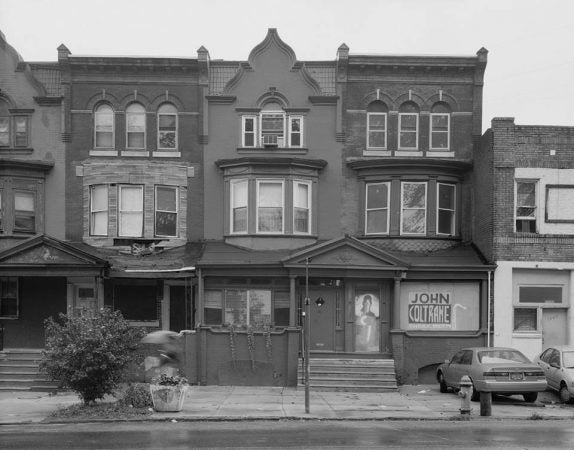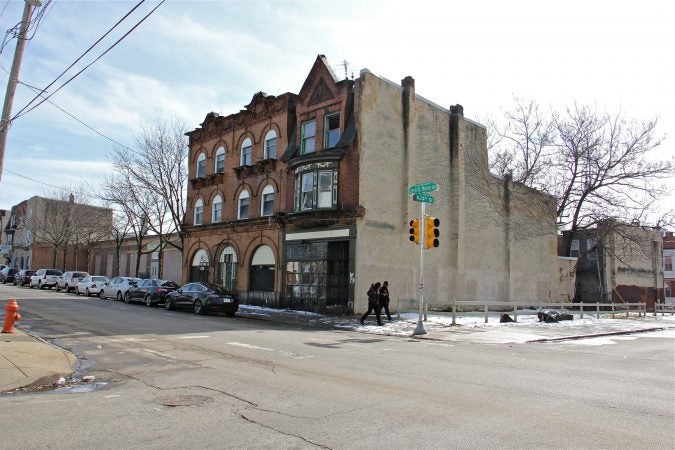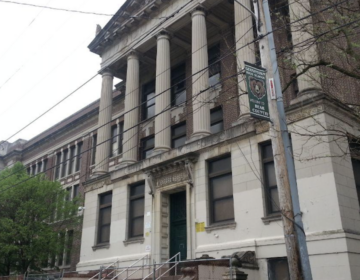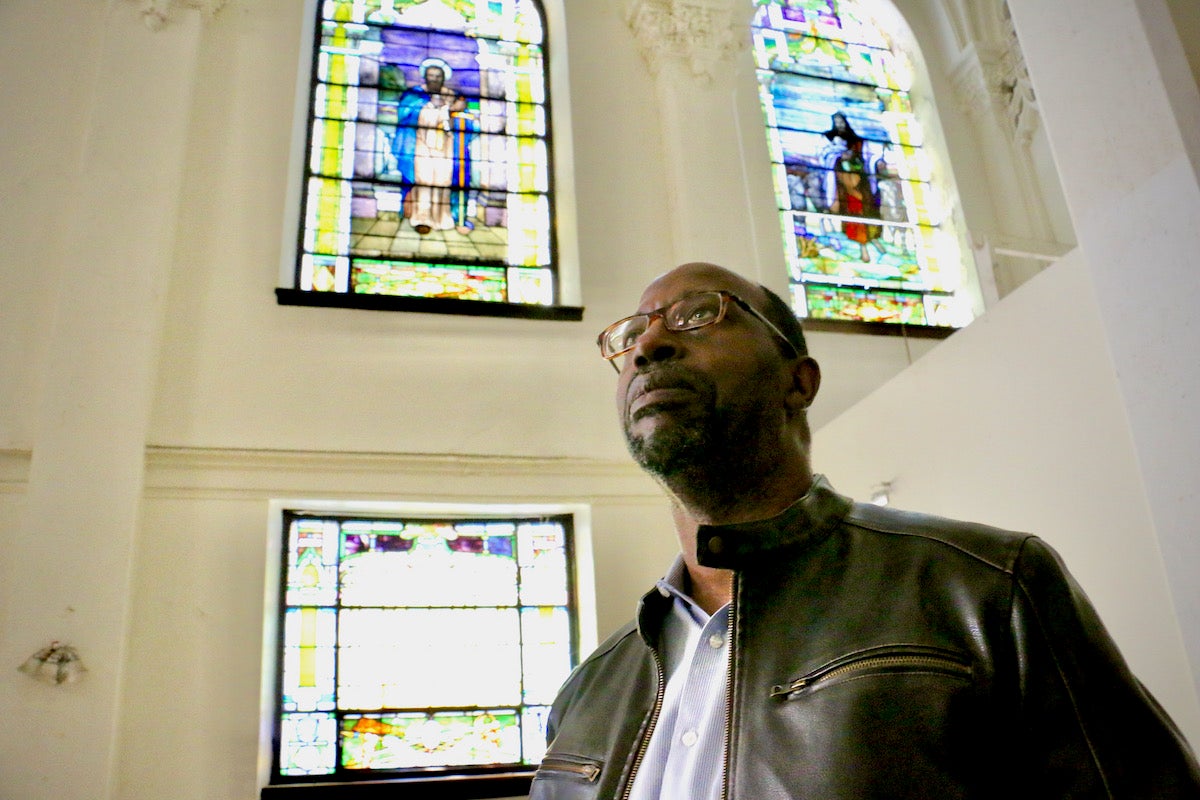After Dox Thrash’s Sharswood home sold in sheriff sale, a focus on alternative preservation
Prominent African-American printmaker Dox Thrash’s former home in North Philly was sold in a sheriff sale in December.
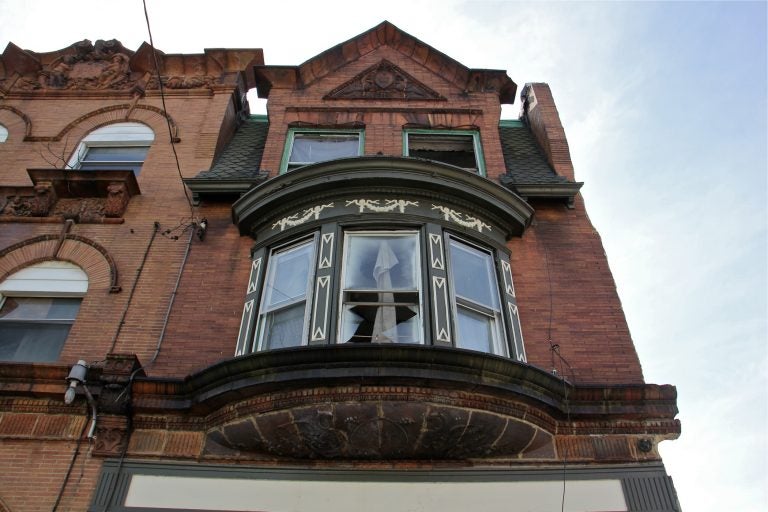
The former home of artist Dox Thrash is in a state of disrepair at the corner of Cecil B. Moore Avenue and 24th Street. (Emma Lee/WHYY)
This article originally appeared on PlanPhilly.
—
A developer has bought the onetime home of prominent African-American printmaker Dox Thrash, threatening a community-born plan for the historic house.
The developer, Jas Group LLC, bought the house at a city sheriff sale on Dec. 19 for $86,000.
The sale worries Dana Rice and Maya Thomas, young preservationists who want to see the home brought back to life as a community center.
Thrash lived at 2340 Cecil B. Moore Ave. in the 1940s and ’50s. He contributed to the Sharswood neighborhood’s vibrant culture as a center of black art, and some of his best-known prints depict local life. Not far from his home, jazz greats Duke Ellington and John Coltrane performed at clubs including the Pearl Theatre and The Checker Club.
The historic row house was added to the city’s Register of Historic Places in 2013, but it remains in dire need of rehabilitation and preservation. It’s sat vacant and vandalized since former owner and Philadelphia activist Shaykh Muhammad died in 2002.
“There’s really not a whole lot of historical fabric left in that area,” Rice said. “So, on the one hand, it’s really good that there is still this one building left. But on the other hand, it is in such poor shape and in a really tenuous situation.”
Thrash presence fades
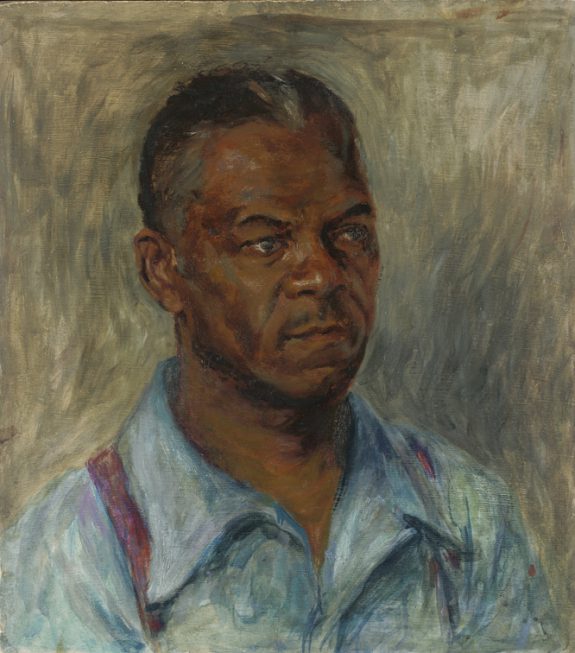
That tenuous situation was aggravated by a tangled title that resulted in the house hitting the auction block at a sheriff’s sale in December. The property’s assessed value was $115,700, about $30,00 more than the winning bid from Jas Group.
The home is one of the last remaining physical reminders of Thrash and his life in North Philadelphia. His former studio was demolished and in 2012, and a nearby Thrash mural was covered with black paint after graffiti writers tagged it.
Rice and Thomas, both graduates of University of Pennsylvania’s historic preservation program, started working to reclaim the house with support from a Penn Praxis grant. The two women and their team conducted a possibility study to come up with visions for its reuse. They identified the house as a historic anchor for a neighborhood that never fully recovered from civil rights-era disturbances and the flight that ensued as businesses and many middle-class families moved to the suburbs.
For Rice and Thomas, the house offers a space to undo some of that collateral damage.
One possible future involves collaborating with the Cecil B. Moore branch of the Free Library to create a new community space.
But that vision is unlikely to come to pass without support from the new owner and a partnership with city agencies, Thomas admits.
“Sometimes developers don’t like to deal with the community, they do whatever they want,” she said. “We just kind of want to make it known that this is a property that is watched. And we are interested and that, eventually, you are going to have to come talk to us.”
Preserving history is priority
Patrick Grossi, advocacy director at the Preservation Alliance for Greater Philadelphia, said the alliance hasn’t had any contact with the new owner. Because the home is on the city’s historical register, however, it cannot be demolished without a fight.
“We are obviously supportive of a future use for the Dox Thrash House, especially one that intentionally honors his legacy,” Grossi said.
Thomas and her partners hosted a Sharswood walking tour Saturday afternoon, showcasing the house and other sites of black history in North Philadelphia.
Muhammad, who lived in the Thrash house until his death, has historic ties to the community too. He was a civil rights activist who was arrested and charged in the 1964 Columbia Avenue riot. Another stop on the tour was Girard College, where months of protests led by lawyer Cecil B. Moore in the 1960s spurred the school’s desegregation.
Thomas said the purpose of the tour was to spark conversation about the neighborhood’s future. Developers are beginning to return to the area after decades of disinvestment. As property values increase, some longtime residents fear being priced out.
Thomas wants those neighbors, and newcomers too, to shape the future of the old Thrash house.
“You want to bring in the history, but you want to have this continued open dialogue about what the future is,” said Thomas. “You want to have [the dialogue] with the people currently living there, are interested in moving there or have moved there recently.”
Rice said they realize they might not be able to physically save the house.
“When we first found out about the tangled title situation with the building and the question marks around the house, we were always thinking about how the thing that’s most important beyond the building is the legacy of Dox Thrash, the legacy of Shaykh Muhammad,” Rice said. “And the reality of the situation is, you don’t need a building to do that.”
You don’t need a building, but you do need the knowledge that it was there, she said.
“You don’t want Sharswood to feel like it’s been erased.”
A phone number listed for developer Jas Group LLC was not in service and the company could not be reached for comment.
WHYY is your source for fact-based, in-depth journalism and information. As a nonprofit organization, we rely on financial support from readers like you. Please give today.



